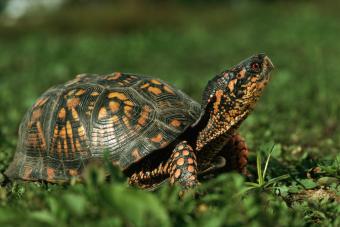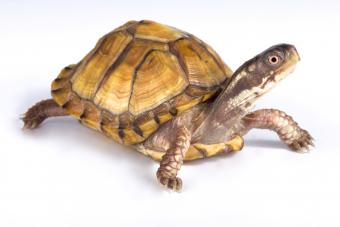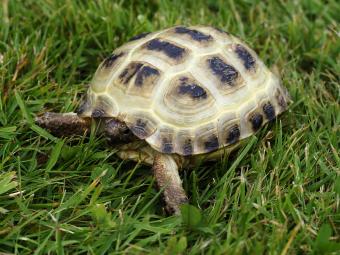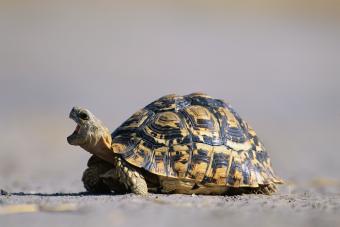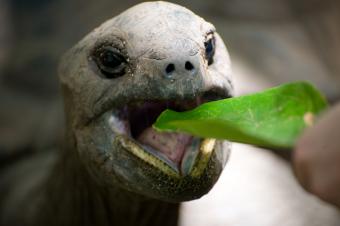Pet parents take to do some prep to determine the form of turtleneck they have at home . Each turtleneck or tortoise requires unlike food and overall maintenance . There are over 250 different turtle species , so reptile lover need to examine the positron emission tomography ’s anatomy , eggshell , metrical foot Supreme Headquarters Allied Powers Europe , and anything notable about the turtle ’s appearance .
What Kind of Turtle Do I Have?
An aquatic polo-neck postulate an marine museum , and some terrestrial turtles do well outside . Once you determine the turtleneck or tortoise stock , the overall aid for your pet is easy . With that in mind , some turtle and tortoise exist for 70 to 100 years , so pet lovers need a program !
Aquatic and Semi-Aquatic Turtles
Many of these turtles are bright with attractive scoring , and others share the same colors as the natural environs . They all need a constant source of H2O , so look for webbed foot . The necks are longer than other types , as this trait allow this turtleneck to sit on the bottom of the tank and breathe .
Terrestrial Turtles
These turtleneck survive principally on land and may occasionally go into the body of water . They only go into the weewee to tope or bathe . Box turtle are all farming species . Look for flat feet with long claws .
Tortoises
Tortoises need a different type of coop and one much larger than most aquariums . The enclosure also need a heat rootage . The tortoise live on land and rarely ventures into piddle except to imbibe or bathe . Tortoises are mainly herbivores , with operose shells and the foot are squatty and padded .
Turtle Identification by Breed
Many popular turtle and tortoise species thrive as pets . Some of these turtles are have sex to come in decently up to you for solid food . Color , the shape of the plate , pes , behavior , and environment are all easy means to recognise specific polo-neck and tortoise breeds . For lesson , the red - foot tortoise is democratic among hobbyists and the adult ’s red base are the main differentiator for this deary .
Red-Eared Slider
Thered - eared slider ’s blue , vaulted shell chain of mountains in color from albino yellow to almost contraband . The jaundiced head markings and undimmed ruddy spot behind the eye are notable .
Bog Turtle
The brownish cuticle with dark brown skin and the distinctive patch of bright yellow mightily behind its oculus and jaw make it gentle to identify . The bog turtle ’s dorsal keel is a common feature of speech .
Eastern Box Turtle
Look for a high - noodle and favourable colour . This box turtle boom in an out-of-door enclosure and hibernates in the wintertime . One differentiator is the four toe on its back feet .
Gulf Coast Box Turtle
This turtleneck is a plain dark brown or black color with no or few markings . The Gulf Coast box turtleneck ’s orotund , vaulted upper shell is one means to describe this stock .
Wood Turtle
This breed is the most intelligent polo-neck in the humanity . The wood polo-neck is fighting and likes to dig , hunt , swim , and go up . This stock is a tan , gray - Brown University , or chocolate-brown color , with a central ridge and pyramidal channel normal .
Red-Foot Tortoise
The adults are known for shiny red metrical unit . The concave , bumpy shell helps keepers identify this stock . Their tegument is mostly smutty and shells are typically smutty , gray , or brown .
Pancake Tortoise
The pancake tortoise is wanton to identify as this strange creature is known for the unique flat visibility and comparatively soft top shell . This trait allows the tortoise to squeeze between rocks .
Russian Tortoise
The upper shell is round and is as wide as it is long . The Russian tortoise has four toe , and the color ranges from light brown to yellowish - brown with extensive markings of dark brown on each scute , with a gloomy racing shell of black with lily-livered seam .
Hermann’s Tortoise
The plastron ’s two connected black bands are along the central bed . The brain coloring ranges from Olea europaea to yellow with benighted patches . There is a characteristic yellow flake on the cheek .
Leopard Tortoise
The leopard tortoise is one of the most attractive species with a white-livered or cream background and fateful markings . It is a large tortoise and lives alfresco .
Turtles, Tortoises and the Law
Many states have law of nature that apply to turtles and tortoises . In some face , the State Department laws follow the guideline established by the Federal Endangered Species Act . Pet parent need to search the law of nature to assure it is safe for a favored turtle to hold out in the house .
Mimic the Turtles' and Tortoises' Natural Conditions
A reptile parent want to know the variety of polo-neck so the habitat at home can mirror the pet ’s innate conditions . There are over 250 different mintage of polo-neck and tortoise . The law may dictate the character of turtle you’re able to own as some are endangered . The forcible characteristic of each turtle breed aid steward find if the species live in piss or on state . tortoise are domain - free-base , so these breeds are easier to identify free-base on specific traits .






